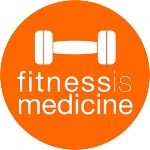Trouble Catching Your Breath?
Breathing comes naturally, right? Yes and no. It is a function of the autonomic nervous system, meaning that it happens automatically, without us having to think about it. However, just because our bodies do “breathe naturally,” does not mean that we are always breathing properly, particularly when we are exercising. Oxygen supplies our muscles with the necessary energy to complete the demands we place on our bodies. Whether you have Chronic Obstructive Pulmonary Disease (COPD), or simply find yourself short of breath while exercising or performing activities such as climbing the stairs, these tips can help you breathe more efficiently.
1. Improve your Posture: Yes, here is yet another reason to practice good posture! If you are in a slouched position, with your head stooped forward, you are restricting your airways and lung capacity. Sit up tall. Pull your shoulders back. And hold your head up high. You’ll be able to breathe much more easily simply by providing an open, unobstructed airway.
2. Use Your Diaphragm. The diaphragm is a large muscle that sits (more or less) horizontally in your abdomen. It is connected to the base of your lungs so that when you contract it properly, it helps to expand the lungs and draw in Oxygen. Place your hand on your abdomen. Take a breath. You should feel your abdomen extend when you inhale and relax when you exhale. If you do not feel this, you may be breathing too shallowly. Practice this while you are lying down. Focus on making your abdomen rise and fall with each inhalation and exhalation.
3. Pursed-lipped Breathing: Inhale through your nose with your mouth closed for a count of 2. Now “actively exhale” by forcing the air out through pursed lips for a count of 4. This action creates a positive air pressure in your lungs and airways, allowing air to flow more freely as this process is continued. This also helps to release potentially trapped air inside your lungs.
If you feel short of breath during the day or while exercising, try implementing these techniques. Begin by practicing while at rest and then utilize them while performing your activities of daily living and particularly while exercising.






